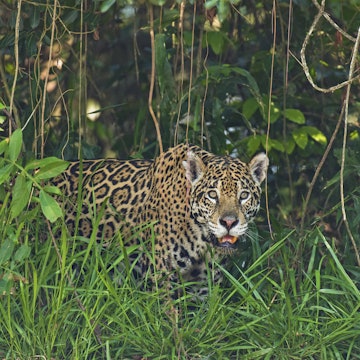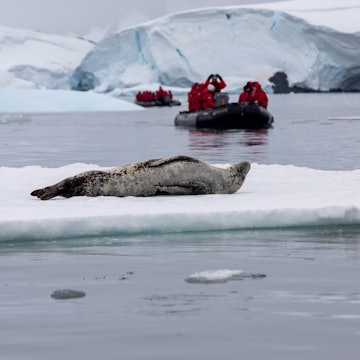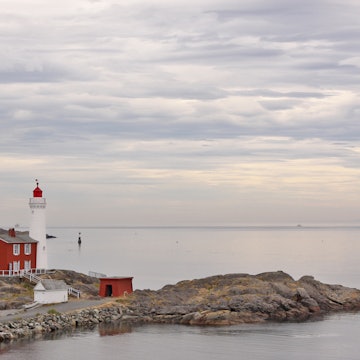
How to find an ethical wildlife conservation project for your next trip
Mar 3, 2022 • 4 min read

Research and conservation needs to continue with or without tourists present © David Merron Photography / Getty Images
The days of riding elephants and volunteering for two weeks at turtle hatcheries are over. A decade ago, these tourism practices were well-intentioned, but research revealed behind-the-scenes malpractice at many establishments and/or minimal positive impact.
Happily, lots of tour operators and conservation projects have updated their policies to stop offering such experiences, but in an era of ‘greenwashing’ – where unsubstantiated claims mislead customers into believing a tour or product is more ethical than it really is – how do you tell the difference?
Justin Francis, founder and CEO of activist travel company Responsible Travel advises travelers to “ask questions about whether people from the local area are trained so they can be employed in tourism, and whether your tour operator directly funds the conservation project. Also, ask to see research reports – preferably independently published – about the success of conservation efforts.”
Here's a guide to navigating the ethics of the wildlife conservation projects of the world.

Your choice counts
Today, the operators and destinations we choose are a form of soft diplomacy; showing governments which areas are worth protecting and can earn equal income from tourism compared to investment in industry and farming. A prime example of this is tracking jaguars in the Pantanal wetlands of Brazil. Rainforest fires raged across the region in 2019 and it has been claimed they may have been started intentionally to clear rainforest, which was deemed more valuable when used for agriculture.
Rainbow Tours works with Caiman Ecological Refuge, a working cattle ranch that has evolved to incorporate two ecolodges and an internationally-recognized jaguar conservation project, Onçafari. The first of its kind in South America, it works to reintroduce the cats into the wild, evaluates the animals’ health and behavior and raises local awareness through lectures, field activities, documentaries and events. Choosing trips to areas that require visitors to support their conservation work and prevent the land from being acquired for other uses is a good option for travelers.
Canada's best wildlife experiences

Part of the solution
If you’d prefer to be more hands-on, there are still good opportunities. The Adventure Creators host a leave-no-trace wild-camping tour tracking brown bears in the Pyrenees. Led by an expert guide, guests search for tracks, fur on trees and bear scat – and hopefully spot and photograph the bears too – to keep track of their movements in the rugged mountain environment. The data is passed on to the local wildlife authorities to help them monitor the bear population, which had been reduced by hunting.
At the luxury end, Relais & Chateaux property Clayoquot Wilderness Resort, situated on the edge of Unesco-listed Clayoquot Sound Biosphere Reserve in British Columbia, has introduced a Coastal Ambassador Program, which offers guests the opportunity to get involved with wildlife-habitat rehabilitation in Clayoquot Sound, including removing marine debris and assisting in preserving breeding and nesting habitats. A proportion of the accommodation fee is also donated to the Clayoquot Cleanup.
Where the wild things are: tracking Guyana’s iconic wildlife
Inclusive of locals
To be sustainable, conservation projects must involve the local community. Francis says, “Your holiday can support conservation by creating livelihoods for local people who often face the missed opportunity cost of protecting their land for wildlife, versus other economic uses such as development, intensive farming or logging.”
Tswalu, South Africa’s largest private game reserve, recognizes that the people of the greater Kalahari are crucial to solving the conservation challenges the country faces, so they create upskilling and employment opportunities for people from the closest settlements and provide them with meaningful careers, as well as enhanced health and education services. Guests are invited to interact with researchers and witness scientific conservation in progress.
9 incredible wetlands for watching wildlife
Hands-on involvement to secure long-term support
Some projects have taken a different approach, offering very hands-on experiences at an extra cost with the aim of evoking emotional loyalty for the conservation of a species. For example, True Luxury Travel offers small groups of guests the rare opportunity to accompany a leading conservationist through Kanha Tiger Reserve, India’s largest Bengal tiger reserve, on a camera-survey expedition to calculate the population density and aid in the battle against poaching. Additional activities include learning about tiger tracking, their prey base and attending talks on tiger-conservation issues by an expert lecturer.
Similarly, Borana Lodge in Kenya allows guests to join a team of rangers on their day-to-day mission of tracking (on foot), identifying and accounting for each black and white rhino on the Borana Conservancy. Plus, all retained earnings from guest stays are reinvested into the training and welfare of the wildlife rangers. The key factor in both cases is that these research activities are carried out with or without tourists; they are not designed specifically for the enjoyment of the visitor.
What’s clear is that traveler choice holds real sway, and these four models highlight how to see past potential greenwashing and find a project that's ethical and sustainable.
You might also like:
Sustainable travel doesn’t mean sacrificing luxury
The best places to see tigers in the wild
How to be a responsible wildlife tourist













